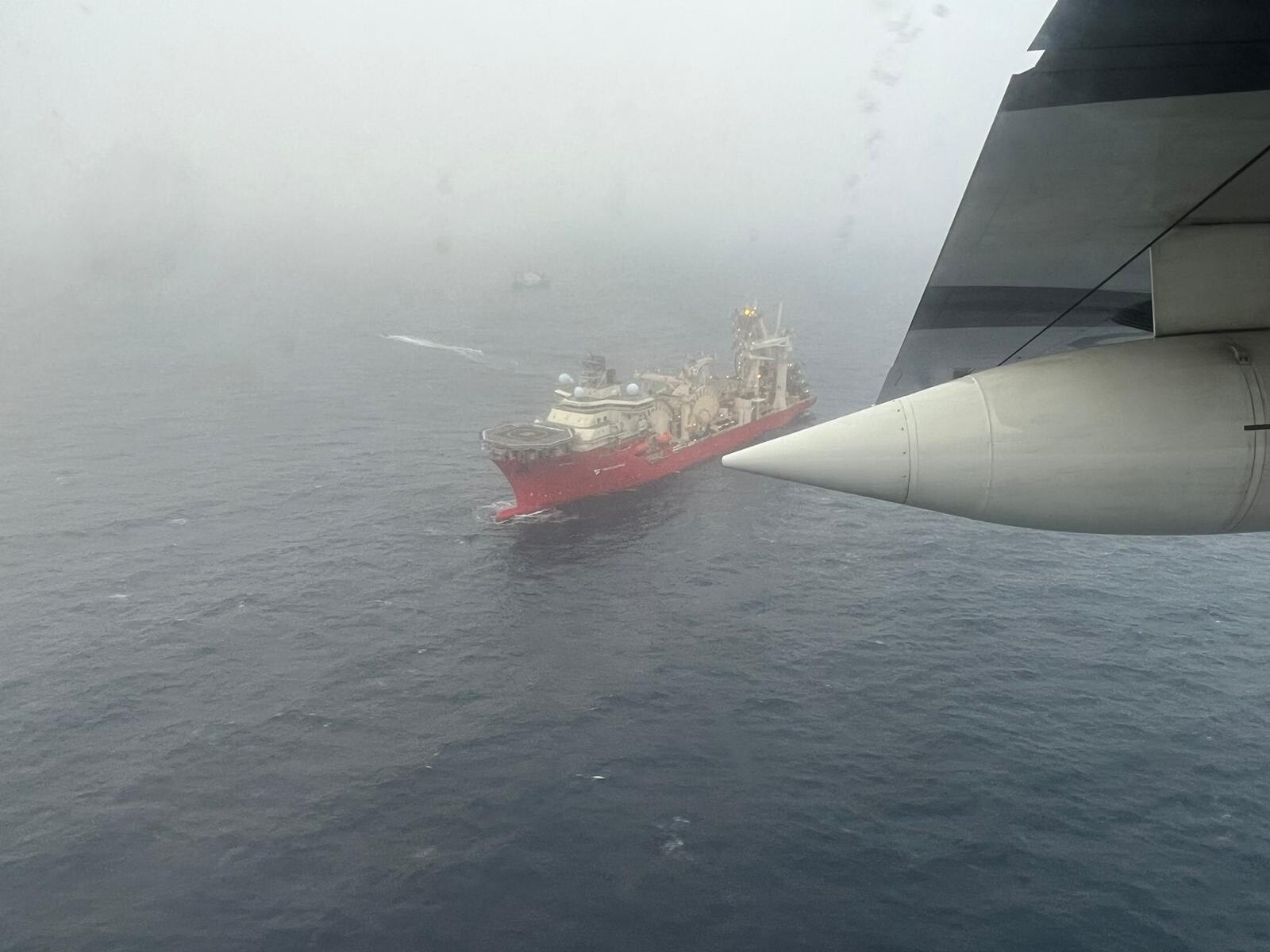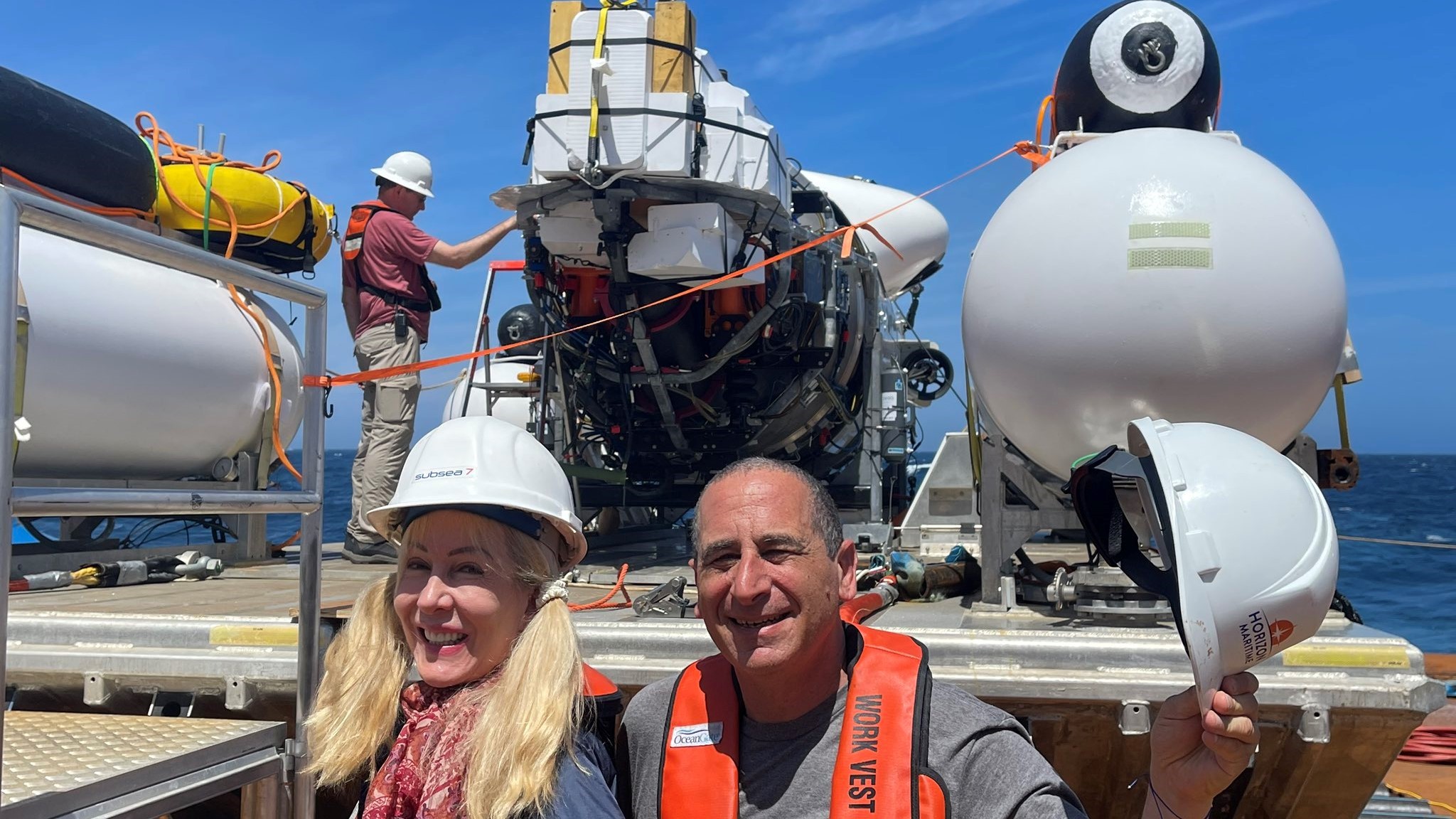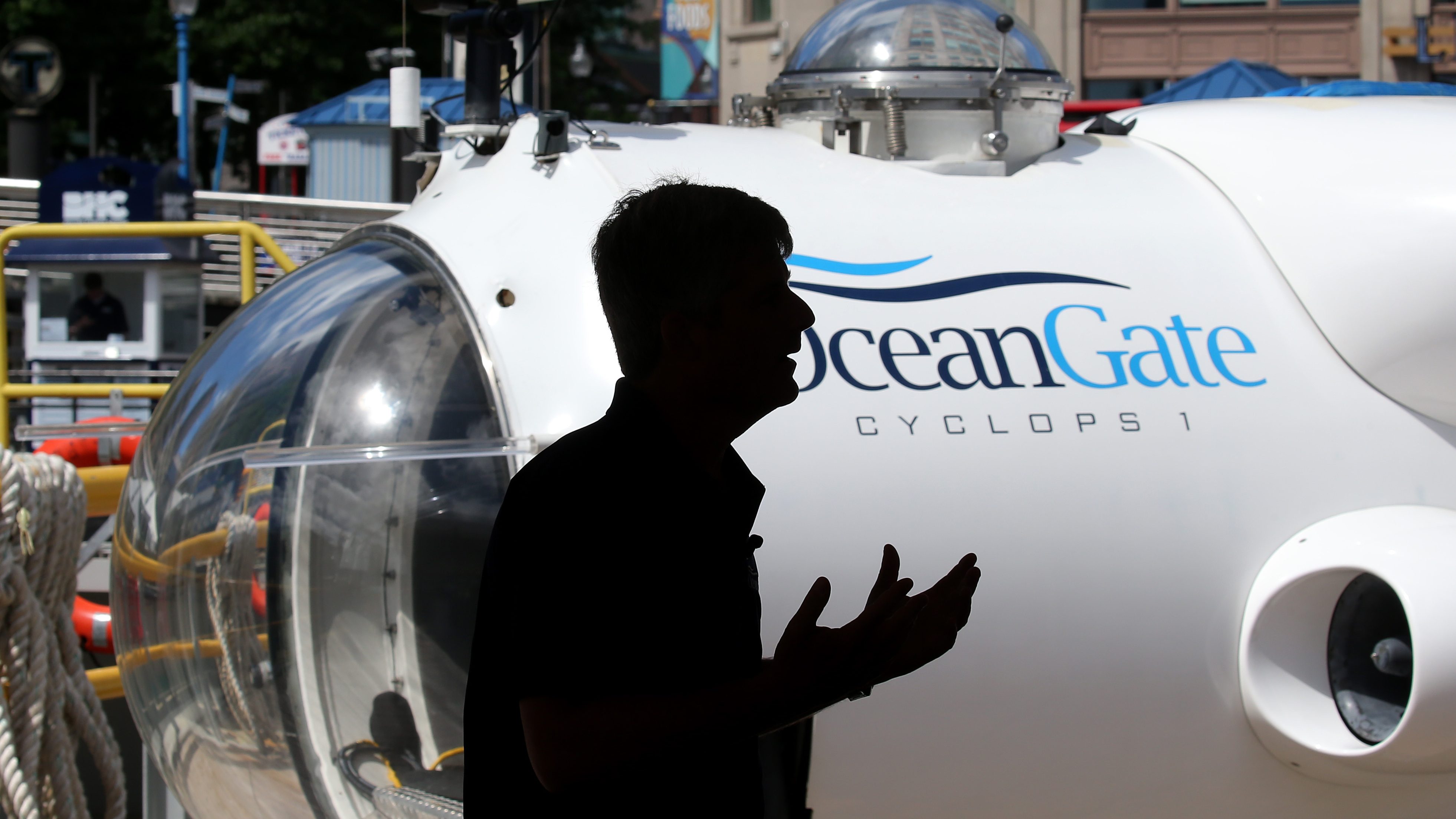After finding debris on the ocean floor "consistent with a catastrophic implosion of the vessel," the U.S. Coast Guard said Thursday that the missing submersible that disappeared en route to the wreckage of the Titanic had imploded while underwater.
OceanGate Expeditions said in a statement the pilot and four passengers are believed to be dead. That includes pilot and chief executive Stockton Rush, along with passengers Shahzada Dawood and his son Suleman Dawood, Hamish Harding, and Paul-Henri Nargeolet.
The expedition company had been conducting trips to chronicle the Titanic's decay as well as the ecosystem around the sunken vessel since 2021.
Get Tri-state area news and weather forecasts to your inbox. Sign up for NBC New York newsletters.
Rear Adm. John Mauger of the Coast Guard said pieces of the submersible, Titan, were discovered in a debris field within the search area by a remotely operated underwater robot which indicated there had been some sort of catastrophic event, like an implosion.
“The outpouring of support in this highly complex search operation has been great appreciated. Our most heartfelt condolences go out to the friends and loved ones of the crew,” Mauger said.
So what does all that mean? Here's a breakdown of some of the terms that have been used during the search and after parts of the vessel had been found.
What does debris field mean?
Put simply, the debris field is where parts of any vessel that had somehow been destroyed. In this case, the debris fields were where teams found pieces of the Titan on the ocean floor.
There were five major different pieces of debris that led officials to realize those parts were from Titan, according to expert Paul Hanken.
"The initial thing we found was the nose cone, which was outside the pressure hull. We then found a large debris field, within that large debris field we found the front end bell of the pressure hull. That was the first indication that there was a catastrophic event," he said.
A second, smaller debris field was also found, which included the other end of the pressure hull, “which basically comprised the totality of that pressure vessel,” Hanken said.
The Coast Guard will continue searching the sea floor near the Titanic shipwreck for more clues about what happened to the Titan submersible deep in the North Atlantic waters.
Officials say there isn’t a timeframe for when they will call off the massive international search. Efforts to recover the submersible and the remains of the five men who died in a catastrophic implosion aboard the vessel remain ongoing.
Much of the search is being done by remotely operated underwater vehicles known as ROVs that can scan the sea floor.
“This is an incredibly unforgiving environment down there on the seafloor,” Rear Adm. Mauger said.
Where was the debris field?
“This morning, an ROV from the vessel Horizon Arctic discovered the tailbone of the Titan submersible approximately 1,600 feet from the bow of the Titanic on the sea floor," Mauger said Thursday afternoon.
Afterward, the ROV found additional debris and it was found to be consistent with the "the catastrophic loss of the pressure chamber," he said.
The families of the five crew members on board were notified afterward.
While the Coast Guard said the debris field was discovered near the Titanic but it’s too early to tell exactly when the catastrophic implosion occurred.
The Titan submersible was reported missing Sunday – eight hours after it initially lost contact with its surface ship – and its 96-hour oxygen supply would have run out Thursday morning. It’s not clear whether the implosion occurred Sunday or in the days following, during an international search effort to find the missing submersible.
The implosion likely occurred near the shipwreck, where the submersible was headed. The Titanic wreckage is located at a depth of 12,500 feet in the North Atlantic waters.
What is an implosion?
The U.S. Coast Guard says a missing submersible imploded near the wreckage of the Titanic, and all five people on board are believed to be dead.
Coast Guard officials said during a news conference Thursday that debris found during the search for the vessel “is consistent with a catastrophic implosion of the vessel,” said Rear Adm. John Mauger of the First Coast Guard District.
According to their basic definitions, an implosion occurs when something collapses inward because the external pressure is greater than the internal pressure, in other words it is a violent inward burst. It is the opposite of an explosion which happens when pressure builds inside of an object and pushes outward.
When an object implodes, it collapses or squeezes in on itself, generally because it is being crushed by an outside force. In the case of the Titan, that outside force may have come from the pressure outside the vessel.
“The debris is consistent with the catastrophic loss of the pressure chamber,” Rear Adm. Mauger said.
How is an implosion different from an explosion? In explosions, the force is radiating outward from the object. Implosions have the force collapse the object upon itself, concentrating and minimizing the volume occupied.
Implosions can shoot parts of the imploding object outward, as the smaller parts rebound away or are ejected as other parts collapse.
OceanGate did not provide details when the company announced the “loss of life” in a statement or how officials knew the crew members perished. The Titan’s 96-hour oxygen supply likely ended early Thursday.
It's not clear exactly when the Titan imploded, but Coast Guard officials said that Sonar buoys dispatched "did not hear any signs of catastrophic failure."
"This was a catastrophic implosion of the vessel which would have generated a significant broadband sound down there that the sonar buoys would have picked up," said Mauger.
Sonar buoys had detected noises in the water Tuesday and yesterday that were being assessed for patterns, but he said today "there doesn't appear to be any connection between the noises and the location [of the debris] on the sea floor."
The Titan was reported overdue Sunday afternoon about 435 miles (700 kilometers) south of St. John’s, Newfoundland, as it was on its way to where the iconic ocean liner sank more than a century ago. OceanGate Expeditions, which is leading the trip, has been chronicling the Titanic’s decay and the underwater ecosystem around it via yearly voyages since 2021. The wreckage of the Titanic, which the submersible was set to explore is located at a depth of around 12,000 feet.
“The wreck sits in the dark bathypelagic, or midnight, zone, at a spot 12,400 feet below the ocean’s surface. The pressure around the famous sunken ship is about 375 atmospheres. That means every square inch of an object’s surface experiences the equivalent of 5,500 pounds of force. Such an amount is greater than the bite pressure exerted by some of the strongest jaws in the animal kingdom: Crocodile bites have been measured at up to 3,700 psi. And one computer modeling study has estimated that a relatively large great white shark could sink its teeth into prey with a force of almost 4,000 psi,” Scientific American reports.
In order for submersibles to survive what would be the equivalent of being crushed by a great white shark’s jaw, the vessel would have to be built out of strong materials and have a shape to withstand the pressure on all side, according to Scientific American, which also notes that in order to combat that pressure, most submersible are spherical, whereas the Titan was cylindrical.
What's the difference between a submarine and a submersible?
The vessel that went missing Sunday in the North Atlantic while exploring the Titanic’s wreckage is a submersible not a submarine, and there is a key difference.
The Titan, with five people on board, remained missing Tuesday even as an international search and rescue effort was underway.
The National Oceanic and Atmospheric Administration explains the difference. A submarine has enough power to leave port and come back to port under its own power.
But a submersible has more limited power and range. It needs a mother ship from which to launch, to return to, and for support and communications.
The Titan’s mother ship is the Polar Prince, a former Canadian Coast Guard icebreaker.
OceanGate, which owned the Titan also made a point to showcase the difference between a submersible and a submarine.
According to OceanGate’s website, “a submersible is supported by a surface vessel, platform, shore team or sometimes a larger submarine. There are many types of submersibles, including both crewed and uncrewed craft, otherwise known as remotely operated vehicles or ROVs.”
Meanwhile, a submarine “is a fully autonomous craft, capable of renewing its own power breathing air,” OceanGate’s website goes on to say.
What is a water column?
During the press conference, the Coast Guard and experts were asked where the debris field of the submersible was in relation to the Titanic. The debris field found was about 1,600 feet off the bow of the 1912 shipwreck in an area without any debris of the Titanic.
“It is consistent with the location of an implosion in the water column,” retired captain and Woods Hole Oceanographic Systems Laboratory Director Carl Hartsfield said during the conference.
But what exactly is a water column?
According to the National Ocean and Atmospheric Administration, the water column included all of the water in the ocean between the surface and the seafloor. In other words, the possible implosion could have happened at any point after submerging in the water but before reaching the ocean floor.
Have rescue crews found or recovered the victims' remains?
The U.S. Coast Guard on Thursday said there were no survivors after the catastrophic implosion deep in the North Atlantic.
The search for the submersible — as well as any clues to explain what happened underwater — was ongoing Thursday after a deep-sea robot found debris near the Titanic shipwreck. Rear Adm. John Mauger, of the First Coast Guard District, said search efforts will continue but that the prospect of finding or recovering remains was unknown, according to NBC News.
The Associated Press and Marlene Lenthang of NBC News contributed to this report.




